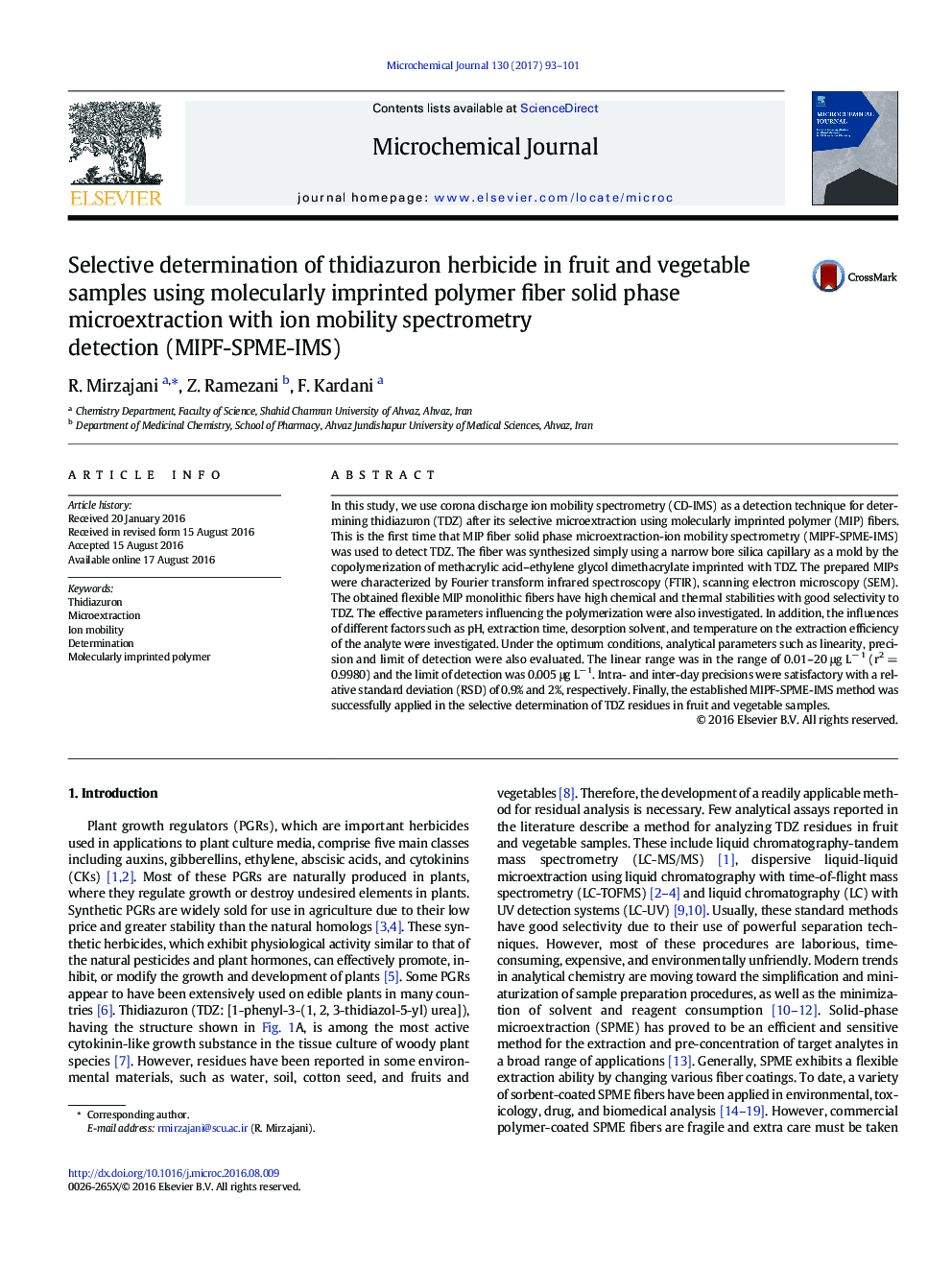| کد مقاله | کد نشریه | سال انتشار | مقاله انگلیسی | نسخه تمام متن |
|---|---|---|---|---|
| 1227484 | 1494864 | 2017 | 9 صفحه PDF | دانلود رایگان |
• In this work, a flexible MIP-SPME fiber using fused silica capillaries was fabricated.
• For the first time, MIPF-SPME-IMS was applied highly sensitive, selective and rapid determination of thidiazuron.
• Corona discharge ion mobility spectrometry was used to determine thidiazuron.
• Selective and highly sensitive determination of thidiazuron without derivatization steps.
• The results were compared with the results obtained by HPLC-UV and are in good agreement with those obtained by HPLC-UV.
In this study, we use corona discharge ion mobility spectrometry (CD-IMS) as a detection technique for determining thidiazuron (TDZ) after its selective microextraction using molecularly imprinted polymer (MIP) fibers. This is the first time that MIP fiber solid phase microextraction-ion mobility spectrometry (MIPF-SPME-IMS) was used to detect TDZ. The fiber was synthesized simply using a narrow bore silica capillary as a mold by the copolymerization of methacrylic acid–ethylene glycol dimethacrylate imprinted with TDZ. The prepared MIPs were characterized by Fourier transform infrared spectroscopy (FTIR), scanning electron microscopy (SEM). The obtained flexible MIP monolithic fibers have high chemical and thermal stabilities with good selectivity to TDZ. The effective parameters influencing the polymerization were also investigated. In addition, the influences of different factors such as pH, extraction time, desorption solvent, and temperature on the extraction efficiency of the analyte were investigated. Under the optimum conditions, analytical parameters such as linearity, precision and limit of detection were also evaluated. The linear range was in the range of 0.01–20 μg L− 1 (r2 = 0.9980) and the limit of detection was 0.005 μg L− 1. Intra- and inter-day precisions were satisfactory with a relative standard deviation (RSD) of 0.9% and 2%, respectively. Finally, the established MIPF-SPME-IMS method was successfully applied in the selective determination of TDZ residues in fruit and vegetable samples.
Figure optionsDownload as PowerPoint slide
Journal: Microchemical Journal - Volume 130, January 2017, Pages 93–101
